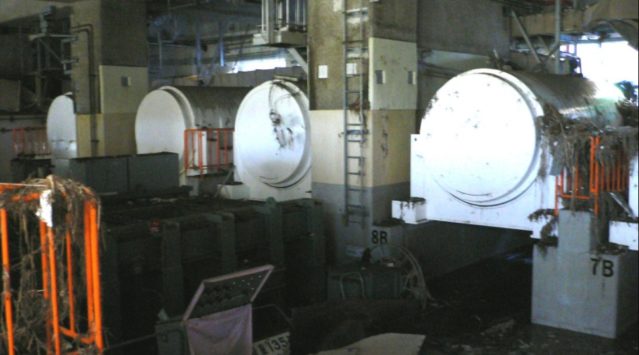Nobumasa Akiyama
May 19, 2017
I. INTRODUCTION
In this essay, Nobumasa Akiyama outlines lessons learned after the Fukushima catastrophe and Japan’s subsequent steps to address nuclear security concerns, describes Japan’s plutonium “trilemma,” and the weak links in the international nuclear security management framework. He concludes that “reducing the risk of nuclear terrorism remains an urgent policy priority for states and non-state actors committed to promoting a secure, sustainable, and peaceful nuclear future.
Nobumasa Akiyama is Professor at the Graduate School of Law and the Graduate School of International Public Policy at Hitotsubashi University
This special report was prepared for the Project on Reducing Risk of Nuclear Terrorism and Spent Fuel Vulnerability in East Asia. It was presented at a Nautilus Institute workshop at International House, Tokyo, September 14-15, 2015, funded by the MacArthur Foundation.
The views expressed in this report do not necessarily reflect the official policy or position of the Nautilus Institute. Readers should note that Nautilus seeks a diversity of views and opinions on significant topics in order to identify common ground.
Banner Image Credit: Fukushima dry cask storage after tsunami, TEPCO Photo Library
II. SPECIAL REPORT BY NOBUMASA AKIYAMA
JAPAN’S NUCLEAR SECURITY AFTER THE FUKUSHIMA NUCLEAR ACCIDENT
May 19, 2017
Introduction
In this essay, the key lessons learned after the 311 Fukushima Nuclear Accident are outlined. These lessons pertained to safeguards, security, and safety, and revealed the critical inter-dependency and overlap between these elements, as well as the necessity to attend to each as a disparate imperative in nuclear spent fuel management (see Figure 1).
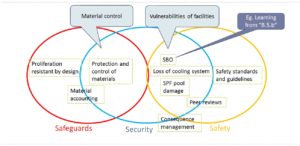
Figure 1: Interface among ‘3S’ Learnt from Fukushima
Direct nuclear security lesson
With regard to nuclear security, the direct lessons learned were the vulnerability of spent fuel due to location, the method used to store the spent fuel (dry casks, which were located at the basement of the facility, survived well being hit by the tsunami whereas spent fuel pools were affected badly). This experience led to revision of the design basis threat (DBT) and consideration on the reformulation of Japan’s spent fuel management policy.
With respect to the Design Basis Threat, the original DBT from 1966 allowed for only a 3.3 meter tsunami, which was redefined in 2002 based on a new model of Japan’s Society of Civil Engineers to 5.7 meters. In 2008, a PRA-based calculation of hypothetical risk (done in-house by TEPCO, the nuclear utility operating Fukushima Daiichi NPP) set the tsunami at 15.7 meters or a 10 meter tsunami once every 100,000 years. A particular problem observed at Fukushima after the actual tsunami in 2011 was that the emergency backup diesel generators, some of which had been put at basement level, where they and others higher up were overwhelmed by the 13 meter tsunami waves that overwhelmed the protective walls built by TEPCO. Thus, this case not only constituted a problem of nuclear security, but also reminds us that the DBT must be defined and dealt with properly.
This generator failure led to the central question after 311: was the uniqueness of the unit/station appropriately taken into account?
Vulnerabilities in Nuclear Security Learnt from Fukushima
The essence of the personnel reliability question is how to identify authorized persons on the site of a nuclear facility. At Fukushima, we observed factors that strongly suggested that the insider threat could be a real factor in nuclear security. In particular, Fukushima faced loss-of-control of the site and the plant itself, including spent fuel and storage systems; an extended power blackout on the entire site; and devastating damages to the emergency diesel generators for most of the plant.
It poses two trade-off challenges. First, how should we manage security challenges in a case of the safety challenge? Under a critical condition of the blackout of the entire site and damages of the emergency electricity supply system, evacuation of staff members on site must be swiftly conducted while maintaining security of the site, preventing the exploitation of such a situation for malicious purposes. What would be the best balance between safety and security in emergency? It highlighted the need to focus on personnel security, especially insider threats.
Second, the clean-up revealed that TEPCO also made tradeoffs between nuclear safety and nuclear security. For example, in their clean-up hiring, 69 temporary workers were engaged in clean-up activities on-site were not traceable in the fall of 2013 (the situation later improved). This lack of assured documentation of site workers raised not only health check and follow-up concerns, but also security concerns. Similar situations were also observed in regular maintenance hiring practices.
The Myth of “Absolute Safety”
Fukushima confronted Japan’s nuclear security policy makers with the fundamental problem of how to prepare best for low-probability, high-consequence events. In part, they confront a perceptual issue: that if they prepare for a conceivable crisis, then a vulnerability must exist that then creates needless fear and opposition and actually undermines community resilience.
Conversely, the 311 Fukushima disaster demonstrated that failure to prepare based on analytical insight and experience jeopardizes evacuation and rescue, made it almost impossible to secure lifelines and food and water safety in an entire region, and led to an immense decontamination effort.
Lessons on Emergency Responses
The 311 Fukushima event served as a test case of Japan’s responses to quasi-CBRN (chemical, biological, radiological or nuclear warfare) terrorism attack requiring large-scale civil evacuation and protection; and of societal and governmental capacity to respond to massive emergency. In particular, it demonstrated the need for a ‘whole of government’ approach that integrates various agencies and private entities. It also revealed the importance of US-Japanese coordination to meet unconventional security challenges
Deterrence against ‘irrational’ actors
The 311 Fukushima event showed clearly the need for the best mix of ‘deterrence, dissuasion and consequence management’ in order to minimize damage, reduce the social and economic impact of terrorism, and to induce changes in cost-benefit calculation of terrorism attack. The case demonstrated that attack on a nuclear facility would cause the social impact on nation’s economic and energy policies as well as on the public psyche against a disaster however it is caused. In the meantime, concern was growing that deterrence may not work against irrational actors. Thus, mitigation measures on site or consequence management for the community should constitute very important parts of countering nuclear terrorism. It suggested strongly that making responses and crisis management more effective would have at least some impact on deterrence against nuclear terrorism, which, given the possible extreme costs, are therefore justifiable on social and economic grounds.
Discussion on Strengthening Nuclear Security
Not long after the 311 Fukushima disaster, the Advisory Committee on Nuclear Security Report began to review the implications, resulting in its March 2012 report. The Committee reiterated the threat perception that nuclear terrorism was a realistic threat, and confirmed that terrorists may be increasingly interested in targeting nuclear facilities. It also recognized that terrorist attacks were increasing in number and scale generally, and argued that it was essential to increase the capacity for emergency response and resilience in the face of such an attack.
The Committee therefore recommended more capacity be created in each of the following areas:
- Early detection of intrusion
- Delay against acts of terrorists
- Improvement of robustness of protected equipment
- Maintenance of protection system
- Preparation for mitigation
- Exercise and evaluation
- Measures against insider threats
This report was prefigured by the issuance on November 14, 2011 of the decision of the Headquarters for the Promotion of Measures Against Transnational Organized or Other Crime and International Terrorism (which was established in the Cabinet Office) entitled “Strengthening of Prevention of Terrorism against Nuclear and Other Facilities.” Japan’s Nuclear and Industrial Safety Agency (NISA) also amended the ministerial ordinance entitled “Regulations Concerning the Installation, Operation, and Other Actions of Nuclear Reactors for Power Generation” in December 2011 (further amended in March 2012), to reinforce nuclear security measures. (Note, NISA was later reorganized into the Nuclear Regulatory Authority, as a part of efforts of the Japanese government to make a nuclear regulatory scheme more effective and independent.)
What has been done/being done?
In addition to these measures, the number of police officers stationed at nuclear facilities was increased and their equipment was upgraded (this step was not the direct response to the event on March 11, 2011, but as a measure to fulfill the upgraded INFCIRC/225/ev.5). More emergency response exercises, including blind ones without warning, have been conducted. A Personnel Reliability Program has been established, making industry primarily responsible for background check of workers who are eligible for access to restricted areas. Japan’s nuclear sector is also now using the International Physical Protection Advisory Service (IPASS) to review the adequacy of its nuclear security measures, and an IPASS peer review was completed in February 2015, and the Japanese government is preparing for receiving the follow-up mission as it introduces measures to implement suggestions made by IPASS.
Japan’s Plutonium Question
Japan retains a stockpile of separated plutonium which is about 11 tonnes in Japan, and about 35 tonnes stored abroad. The Japanese government also decided to continue with its nuclear fuel cycle program, and to repurpose and to use the Monju fast reactor as an international research facility as a foundation stone of the Basic Energy Plan. (This plan was adjusted in late 2016 when Japan partnered with a French program to build a fast reactor called the Advanced Sodium Technological Reactor and to decommission the Monju reactor). Just as important, Japan’s government also declared that it would continue its reprocessing policy. Under the Nuclear Security Summit process, Japan pledged and returned 300 kg of plutonium suitable for Fast Critical Assembly to the United States (in March, 2014). Although the negotiation between the United States and Japan had begun before Prime Minister Abe took the office, it was his government that persuaded scientists of JAEA to make do without this material. Japan made additional commitment to reduce the stockpile of sensitive materials, by announcing to hand over HEU fuel of the Kyoto University’s research reactor (KUR) to the United States in 2016.
On the downside, the Japanese government also failed to report properly no less than 640 kg of plutonium in MOX fuel, which was loaded but not burned in a nuclear power reactor, a mistake that came to light in June, 2014. However, this material was in reality reported to IAEA in a mandatory reporting scheme, and put under IAEA safeguards although the Japanese Atomic Energy Commission failed to include the material in its voluntary reporting scheme (an error identified by a non-governmental activist).
‘Trilemma’ of Pu disposition problem of Japan
Japan continues to grapple with the “trilemma” posted by the disposition of its plutonium (see Figure 2).
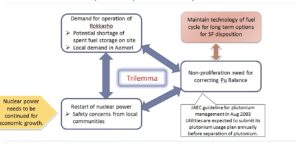
Figure 2: Japan’s ‘Trilemma’ of Pu disposition problem of Japan
On the one hand, it must respond to the demand for the operation of the Rokkasho reprocessing plant in order to deal with the shortage of spent fuel storage on site as well as the demands of the local Aomori community that the reprocessing proceed as previously agreed. However, this response must also be balanced against the priority accorded to the restart of nuclear power given the understandable concerns from local communities about the safety of nuclear power. Japan’s non-proliferation status also demands that it correct the plutonium balance so that there is no excess plutonium in Japan’s nuclear power program. Japan’s August 2003 guideline from the Atomic Energy Commission for plutonium management requires utilities to submit annual plutonium usage plans before plutonium is separated in addition to the existing stockpile. However, the utilities find it hard to use enough plutonium to justify further separation. And Japan must also develop long-term options for storage and ultimate disposal of spent fuel waste. All these demands result in policy gridlock that make it almost impossible to solve the plutonium trilemma.
Uncertainty in international security and political climate and environment
Undoubtedly the risks and threats that constitute nuclear insecurity are real. These include terrorist activities; maritime security concerns; and insufficient border and export controls. Relatedly, confrontational and competitive relationships between states, including territorial disputes, combine with lack of administrative and technological capacities to establish conditions that undermine nuclear security. The latter include deficits in the capacity of state, industry and laboratories to meet requisite nuclear security requirements, lack of human resources, the sheer number of islands and ports that facilitate nuclear smuggling and non-state actor mobility (see Figure 3).
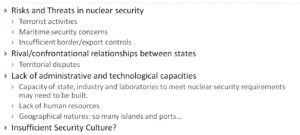
Figure 3: Uncertainty in international security and political climate and environment
All these factors are compounded on the sites of nuclear facilities by deficient security culture of the kind discovered at the Fukushima reactors in the aftermath of the 311 disaster. As is often said, “a nuclear accident anywhere is an accident everywhere,” and nuclear terrorism in any country is a security threat to the entire international community. It is important that the awareness of the needs for nuclear security measures should be raised through nurturing nuclear security culture and sense of urgency.
Weak Links in the ‘global nuclear security architecture’?
As demonstrated by the case of the so-called Khan network of clandestine procurement of sensitive technology, proliferation involving non-state actors happens through weak links. Multilateral legal frameworks and initiatives provide important platforms for states to work on increasing the capacity for tackling the threats of proliferation of WMD capabilities among non-state actors. These frameworks thereby create the capacity to cope with threats of nuclear terrorism at the global level but for many of these frameworks, important links are still missing (see Figure 4).
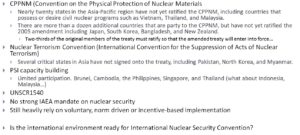
Figure 4: Weak Links in the ‘global nuclear security architecture’
Under the rubric of the Convention on the Physical Protection of Nuclear Materials (CPPNM), nearly twenty states in the Asia-Pacific region have not yet ratified the CPPNM, including countries that possess or desire civil nuclear programs such as Vietnam, Thailand, and Malaysia. The 2005 amendment to the CPPNM did not come into force until May 8, 2016, and high priority should be placed on the universalization. This important Amendment expands the application of the CPPNM beyond international transport of nuclear materials, to both nuclear facilities and nuclear material in peaceful domestic use, storage and transport.
Several critical states in Asia have not signed onto the Nuclear Terrorism Convention (International Convention for the Suppression of Acts of Nuclear Terrorism), including Pakistan, North Korea, and Myanmar.
The Proliferation Security Initiative also lacks participation and enforcement capacity, especially in Brunei, Cambodia, Indonesia, Malaysia, the Philippines, Singapore, and Thailand.
The implementation of UN Security Council resolution 1540 remains lack luster. The resolution imposed binding obligations on all UN member states under Chapter VII of the UN Charter to take and enforce effective measures against the proliferation of weapons of mass destruction by non-state actors.
Finally, given that the process of nuclear security summits did not lead to an International Nuclear Security Convention or any other forms of legally binding global comprehensive obligation against nuclear terrorism, it is clear that there are still dimensions of the risk of nuclear terrorism that can be redressed and even overcome. That leads to the role of the International Atomic Energy Agency (IAEA) and individual states. The IAEA still has no strong mandate to address nuclear security issues. Although member states recognizes IAEA’s central and coordinating role in promoting nuclear security, some are cautious in reallocating agency’s resources into nuclear security programs, and increasing agency’s role as it could overshadow state sovereignty. Therefore, implementation of measures to strengthen nuclear security is primarily left in sovereign states. Nuclear security relies voluntary, norm driven or incentive-based implementation.
For all these reasons, therefore, reducing the risk of nuclear terrorism remains an urgent policy priority for states and non-state actors committed to promoting a secure, sustainable, and peaceful nuclear future.
III. NAUTILUS INVITES YOUR RESPONSE
The Nautilus Asia Peace and Security Network invites your responses to this report. Please send responses to: nautilus@nautilus.org. Responses will be considered for redistribution to the network only if they include the author’s name, affiliation, and explicit consent.


